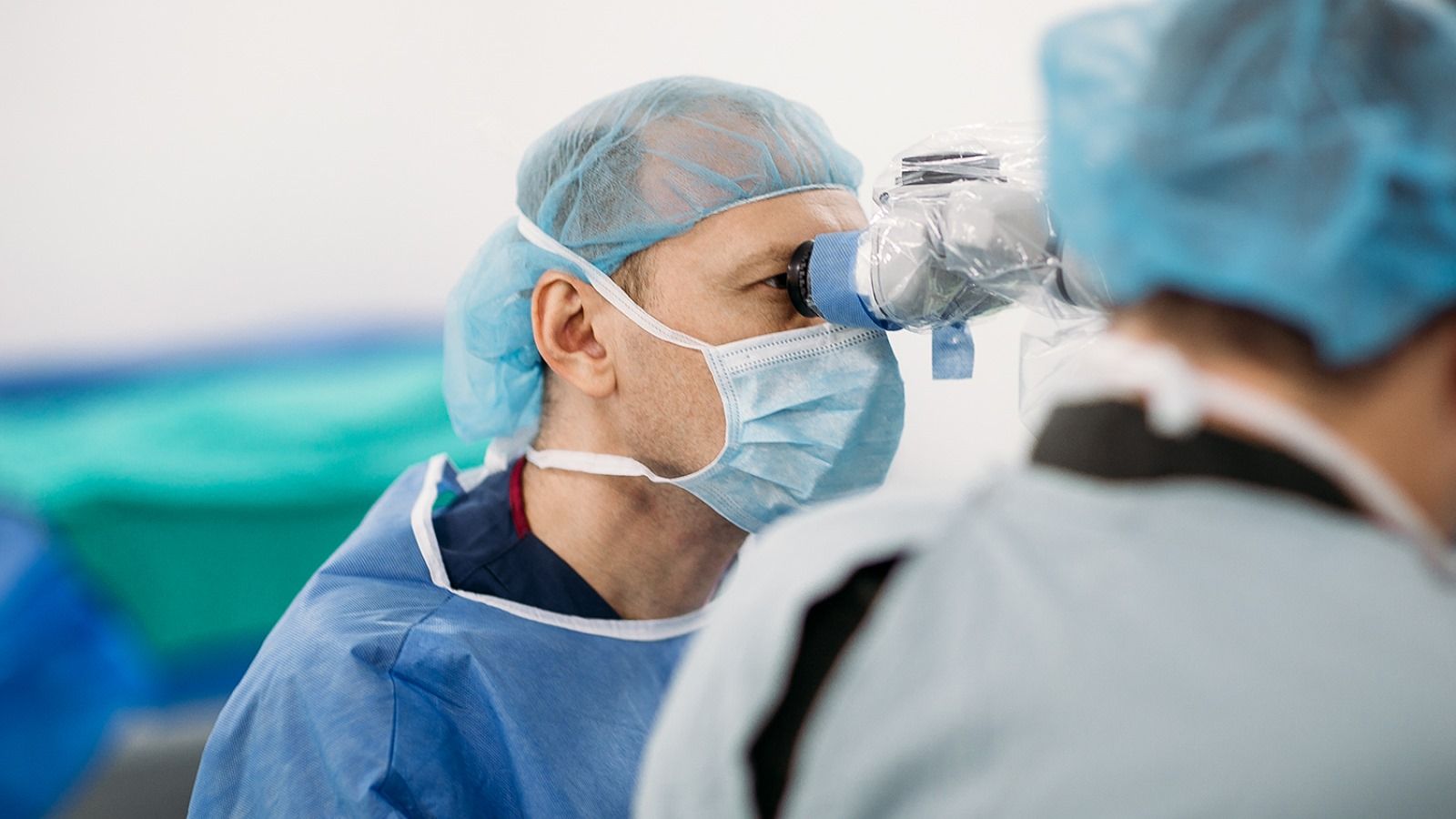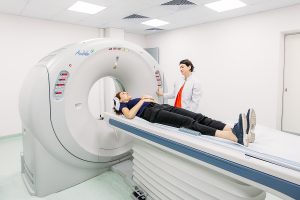
How could an energy efficient medical centre look better and cost less?
Located in Tbilisi, Innova Medical Centre became significantly more energy efficient thanks to grant support from the EU, which the company received as cashback through the EBRD’s Energocredit credit line from the bank Bank of Georgia. The medical centre now saves more than 50% of its energy, saving thousands of euros each year.
However, this is only the tip of the iceberg – according to Energocredit Team Leader, Giorgi Zurashvili, more than 30,000 Georgian households and numerous enterprises benefited from the programme. Energocredit’s budget for Georgia was €68 million with the European Union providing €5.3 million in grants and assistance in the three countries of the Caucasus.
The programme is part of the EU4Energy initiative, which supports the green technology transitions of businesses in Georgia by working with international financing institutions and local banks.
The programme assigns separate credit lines to entrepreneurial, commercial and civil borrowers for investments in energy efficiency and renewable energy. Clients who have bought energy efficient products that comply with Energocredit criteria are provided with reimbursements from the EU ranging between 10% and 15% of the total loan. If a borrower has a project that does not meet Energocredit’s criteria in terms of energy efficiency, they can ask for assistance in redefining the project. As a result, they can receive a 15% subsidy from the EU to implement the recommended energy efficiency measures.
https://www.youtube.com/watch?v=GtyOPaLrfjk&feature=emb_title
What does an energy efficient medical centre look like?
Innova opened in a former research institute in 2015. The building underwent refurbishments to ensure that the medical centre was energy efficient. Innova’s goal was to have a more positive impact on the environment and to save costs simultaneously. After implementing a series of energy efficiency measures, the medical centre achieved its goal.
The first step was insulating the building facade – the building’s external walls are insulated with a special thermal gypsum-fiber material. It is 50 mm thick and meets EU standards. This ensures that the building remains cool in the summer and retains heat during the winter, meaning that less energy is spent cooling and heating the building.
Additionally, energy efficient double-glazed windows were installed with a thermal insulating value of 1.5, which is close to the EU standard and rare in Georgia where the value is usually 3.
Modern energy efficient heating, ventilation and air conditioning systems were installed in the surgery department where these factors are extremely important.
The medical centre also opted for energy efficient LED light bulbs, some of which are equipped with photo sensors, helping to save energy and electricity costs.
How profitable are these measures?
Energy efficiency means, on one hand, reducing harmful impacts on the environment and, on the other hand, long-term financial savings. The Innova example demonstrates both of these benefits.
According to an energy evaluation conducted by experts within the EU-EBRD Energocredit framework, the medical centre achieved significant savings in areas such as:
- Electricity: thanks to the use of LED lights instead of ordinary lightbulbs, the medical centre saves €17,000 each year;
- Natural gas: more than 109,000 m3 of natural gas are saved annually, resulting in a financial saving of €19,000.
Overall, according to the energy evaluation, Innova reached 51% in energy savings thanks to implementing new energy efficient measures. This means that the centre is also able to save more than 50% on energy costs and heating bills. Additionally, this influences Innova’s CO2 emissions, reducing its emissions by 330 tonnes annually, which equates to the amount of CO2 absorbed by 15,000 trees per year.
Director of Innova, Giorgi Khipiani, calls this “a win-win situation for everybody” and says that Innova’s energy efficiency is not only profitable for the company financially, but for the environment as well.
“In order to generate each kilowatt of energy, lots of resources are spent and CO2 is emitted, which is a big challenge for humankind. Accordingly, the less energy we use, the less carbon dioxide we emit. Generally, by saving meaninglessly spent energy, we can make a huge contribution to environmental protection,” he says.
EU support for energy efficiency
 Khipiani explains that all of the construction materials, equipment, devices and individual systems used during the renovation are more expensive than the materials usually used in Georgia, and that many enterprises cannot afford this financial burden. Therefore, he says that the EU grant received as part of the Energocredit programme was crucial.
Khipiani explains that all of the construction materials, equipment, devices and individual systems used during the renovation are more expensive than the materials usually used in Georgia, and that many enterprises cannot afford this financial burden. Therefore, he says that the EU grant received as part of the Energocredit programme was crucial.
The EBRD launched the Energocredit programme back in 2007. The EU has been involved in this project since 2012 as a subsidy donor, encouraging investments in energy efficiency. The project offered loans for enterprises and households to increase their energy efficiency through seven key commercial banks in Georgia. The beneficiaries also received cashback from the programme in the form of an EU grant (10-15% of the fee paid for the energy efficient equipment or materials). The loan applicants had to meet one condition – the project had to be energy efficient.
Energocredit Georgia’s Team Leader, Giorgi Zurashvili, says that the beneficiaries received 10–15% of the money invested in energy efficiency renovations. In Innova’s case, the centre received 10%, amounting to around €29,000, after spending €290,000 on renovations.
As well as small and medium-sized enterprises, the project also provided consumer loans for individuals to purchase household appliances. To be considered for these loans, the only requirement was for household appliances to be energy efficient.
“40% of the total sum of the programme (€68 million) was allocated for the individual consumer loans,” says Zurashvili.
A web-platform displayed energy efficient household appliances and a list of shops advertised that they were selling energy efficient appliances. While purchasing these appliances, the customers were able to apply for a 10% grant offered by the EU. This means customers could receive 10% cashback from the price of the appliance purchased.
According to Zurashvili, 30,000 clients used this service in Georgia: “This project reached a fairly large scale,” he says.
Energy audit
As well as loans and grants, the programme was conducting energy audits of medium-sized enterprises. Energocredit provided free energy audits to projects submitted for Energocredit financing by SMEs. In cases where additional energy efficiency potential was identified, the auditors would issue a set of recommendations to the applicants outlining how to reach the set goal. Zurashvili says, “the energy audits are an established practice in Europe, for example, the financial audit in Georgia. For an enterprise, it is mandatory to carry out periodical energy audits and to have a clear picture of how efficiently it uses various types of energy. There are established limits, and if the organisation exceeds them, it will be given recommendations for reduction. This practice is new for Georgia. Energy audits are not mandatory, however, there are efforts to refine legislation and to get closer to EU standards – this is one of the conditions of the EU-Georgia Association Agreement.”